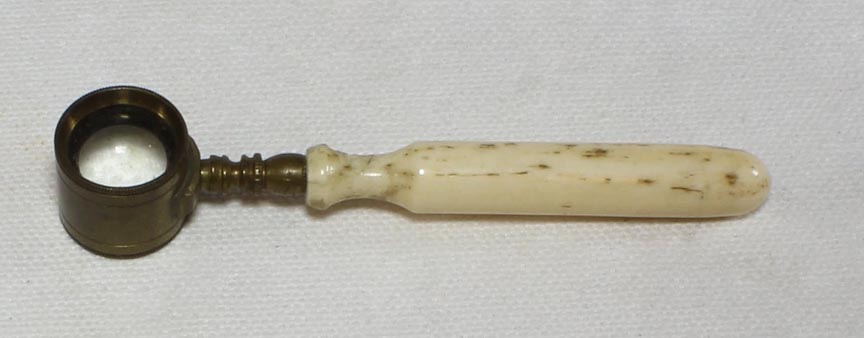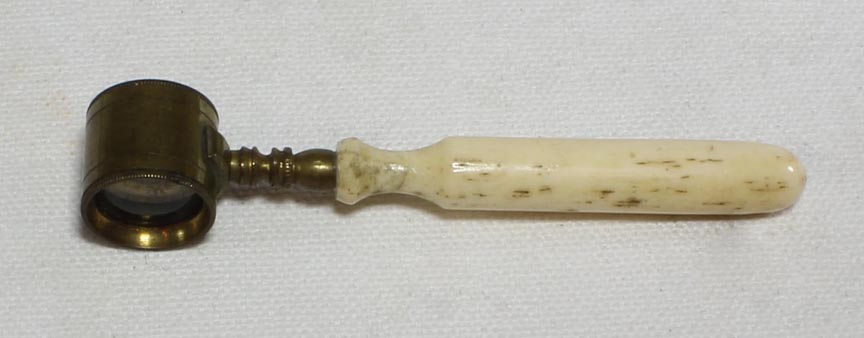SMALL CODDINGTON MAGNIFIER:
c. MIDDLE THIRD of 19th CENTURY


DESCRIPTION
This small magnifier is made of bone and brass. It is unsigned and bears no hallmark. There are two lines scribed around the lens housing and the Coddington lens is held in the brass lens housing by a knurled cap screwed to each end. It is about 91 mm in length. The aperture of the lens is about 11 or 12 mm in diameter. Unlike the Stanhope magnifier, this lens is symmetrical and can be used from either side.
HISTORY OF THE CODDINGTON MICROSCOPE
Until and even after the invention of the achromatic aplanatic microscope, small
pocket-sized magnifiers were in great demand. A simple uncorrected lens worked
well enough for very low powers, but once magnification exceeded just a few X,
distortions became apparent. These include spherical aberration, chromatic
aberration, and curvature of the field of view. Several different methods were
used to minimize these distortions, the most major one being spherical
aberation. The simplest and easiest, was simply to 'stop-down' the aperture
with a diaphragm. This was common in compound microscopes until the widespread
use of achromatic aplanatic objectives. In 1812 William Hyde Wollaston
introduced a much improved version of the earliest magnifiers
employing two hemispheres of glass mounted together with a small stop between
them. Sir David Brewster improved the design by using a single piece of glass
and cutting deep groove in it. In 1829, Henry Coddington popularized the
Wollaston-Brewster lens, and further refined the design by modifying the shape
of the groove, though Coddington never claimed to be its inventor. It was much
less expensive than creating a complex lens from different elements and then
cementing them together. The Coddington lens was sold in various sizes and
types from its inception, right into the 21st century; it is still available
today and is an inexpensive alternative to more complex magnifiers. It allows a
magnification of up to 20 diameters, whereas an ordinary magnifier is limited to
less than 5. Its major drawback is the reduced size of the field of view.
Despite the latter drawback it is far superior to the simpler Stanhope type of
magnifier. Improvements above this design generally are multi-element
magnifiers which increase the field of view and flatten the image across that
field.

